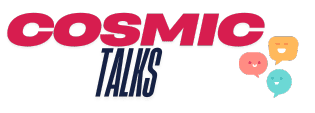In the contemporary business environment, the term “In-House Workshop” has gained traction as organizations seek innovative ways to empower their employees. An In-House Workshop refers to training sessions, skill development programs, or collaborative projects that are conducted within an organization, utilizing its own resources and personnel. Unlike external workshops, which bring in outside experts, In-House Workshops leverage internal knowledge and expertise to address specific challenges and needs of the organization. (Visit: In-House Workshop)
In-House Workshops allow flexibility in scheduling and customization, making them particularly effective for a variety of reasons. For instance, they provide an opportunity for team members to learn in a familiar environment, fostering collaboration and camaraderie. If you want to learn more about the potential of In-House Workshops, you can find detailed insights at this link: https://woodpeckersglobal.com/.
Key Aspects and Benefits of In-House Workshops
Customized Learning Experience
One of the primary advantages of In-House Workshops is the ability to customize content to meet the specific skills and knowledge gaps within the organization. Unlike generic training sessions that cover broad topics, these workshops can be tailored to focus on challenges unique to a particular team or department. For example, a tech company struggling with Agile project management could organize a workshop specifically aimed at enhancing Agile practices among its development teams.
Cost-Effectiveness
In-House Workshops can also represent a more economical choice compared to external training sessions. When organizations host workshops internally, they save on expenses related to travel and accommodations for external trainers. Additionally, they can utilize their existing staff as facilitators, representing a significant cost-saving opportunity. For instance, a marketing department might find that its most senior staff members have vast experience in digital marketing that they can share, exhibition stall design in Mumbai bypassing the need to hire an external consultant.
Team Cohesion and Culture Building
Another vital aspect of In-House Workshops is the potential for improving team dynamics and organizational culture. By collaborating and learning together, employees can build stronger relationships, facilitate open communication, and enhance a sense of belonging. For instance, a manufacturing firm might conduct safety workshops emphasizing team collaboration in identifying risks and improving safety standards. This not only improves safety protocols but also strengthens relationships between employees and management.
Real-World Examples of Successful In-House Workshops
Several organizations have successfully employed In-House Workshops to foster growth and innovation. Google, known for its employee-centric culture, often utilizes in-house training sessions to enhance creativity and problem-solving skills among its teams. By leveraging employees as instructors, Google not only saves costs but also empowers its workforce to share knowledge and expertise.
Another example is Zappos, an online shoe retailer renowned for its exceptional customer service. The company regularly conducts in-house workshops focused on customer relationship management. This initiative reinforces its commitment to customer satisfaction while simultaneously developing skills that empower employees to excel in their roles.
Challenges and Misconceptions about In-House Workshops
Despite their benefits, In-House Workshops can face challenges and misconceptions. One common concern is the perceived lack of credibility and expertise when using internal resources. Employees may feel skeptical about the quality of training if it is not facilitated by renowned external experts. To overcome this challenge, organizations can invite knowledgeable internal leaders to co-facilitate workshops alongside external experts, blending insider knowledge with authoritative insights.
Another misconception is that In-House Workshops lack structure and organization. Some employees may believe that internal workshops will be less rigorous than traditional external sessions. Addressing this concern involves carefully planning each workshop, setting clear objectives, and utilizing structured methodologies to ensure effective delivery.
Practical Advice on Implementing Effective In-House Workshops
To implement In-House Workshops successfully, organizations can follow several best practices:
Identify Needs and Goals
Begin by conducting a thorough needs assessment across teams to identify skill gaps and learning objectives. Engaging employees in surveys or feedback sessions can provide insights into their specific training needs, leading to more focused and relevant workshops.
Select Qualified Facilitators
While leveraging internal trainers can be beneficial, organizations should take the time to identify employees with the skills and experience required to impart knowledge effectively. Offering training on facilitation skills to potential trainers can enhance the quality of the workshops.
Create a Collaborative Environment
Encourage participation and open dialogue during workshops. Allowing employees to contribute their insights and experiences creates a more inclusive learning atmosphere and enhances knowledge sharing.
Measure Success
Establish metrics to evaluate the effectiveness of In-House Workshops. Gathering feedback from participants, assessing knowledge retention, and analyzing improvements in performance or skills can help determine the value of the workshop and inform future training sessions.
In conclusion, In-House Workshops present organizations with a unique opportunity to enhance employee development, strengthen team dynamics, and improve overall performance. By customizing learning experiences, fostering collaboration, and addressing misconceptions, businesses can turn their internal resources into powerful tools for cultivating a skilled workforce. The key lies in careful planning, engaged participation, and ongoing evaluation, which together pave the way for impactful training initiatives that resonate within an organization.



